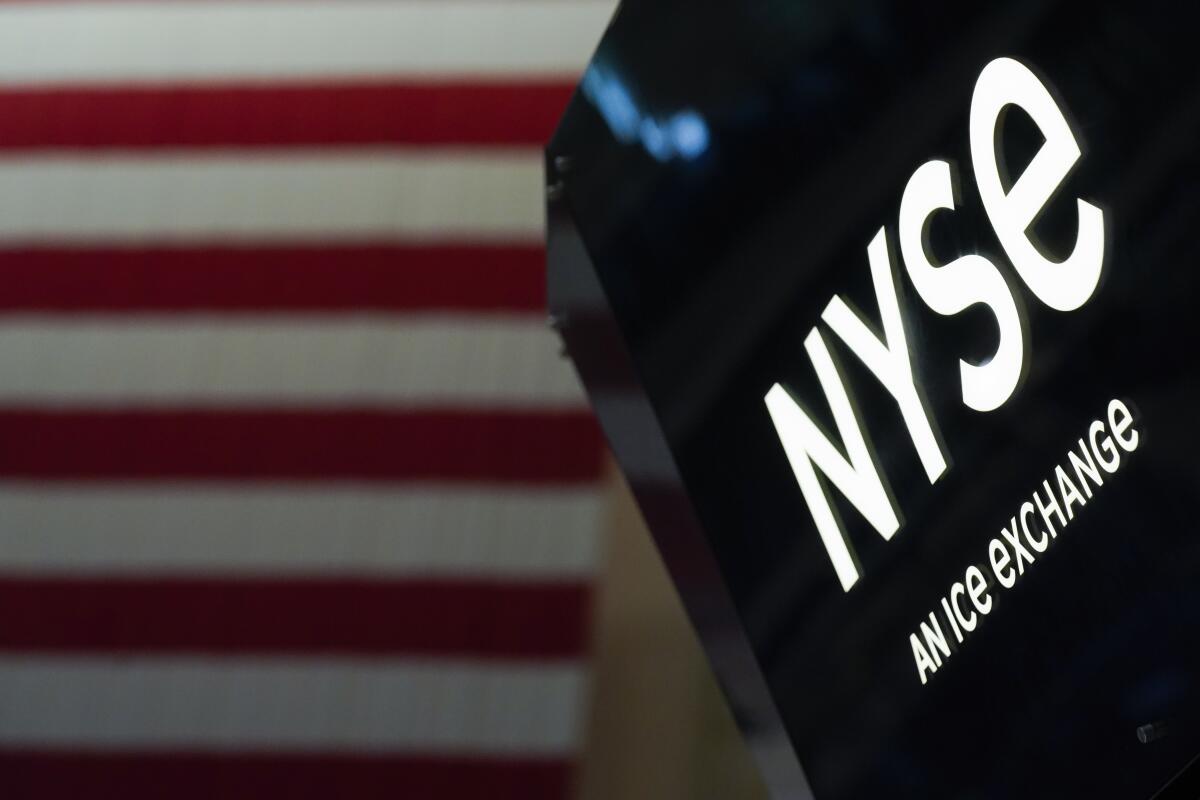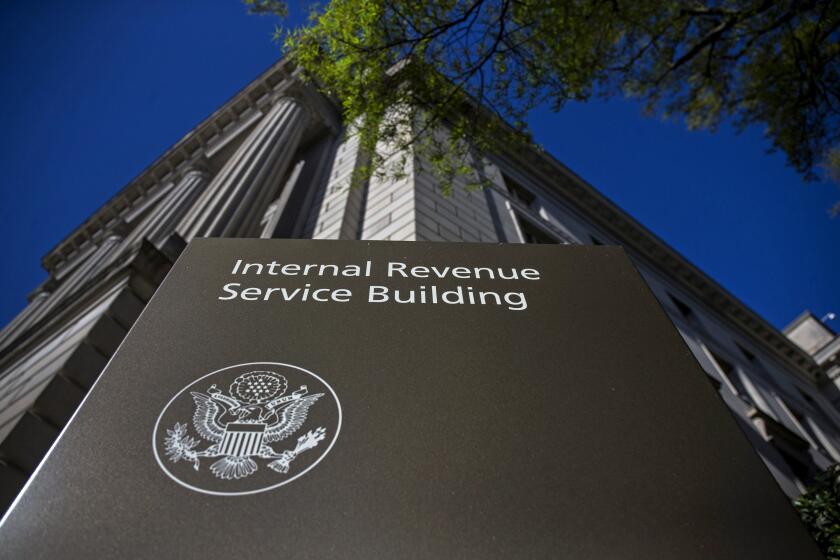Wall Street’s AI frenzy and strong bank profits send stocks higher

- Share via
Wall Street’s frenzy around artificial intelligence helped push stocks to their best level in more than 15 months Tuesday, along with stronger-than-expected profit reports from several big financial companies.
The Standard & Poor’s 500 index rose 32.19 points, or 0.7%, to 4,554.98 and its highest finish since early April 2022. The Dow Jones industrial average rallied 366.58 points, or 1.1%, to 34,951.93, and the Nasdaq composite climbed 108.69 points, or 0.8%, to 14,353.64.
Microsoft was by far the biggest single force pushing up the S&P 500. It shook off a morning loss and rose 4% after announcing the pricing for some artificial-intelligence services. It will charge users $30 per month for its Microsoft 365 Copilot, which Wedbush analyst Dan Ives called a “flex-the-muscles move.”
Wall Street has sent a select group of stocks soaring this year on hopes that AI will drive tremendous growth in profits and herald a revolution for the global economy. Besides Microsoft’s nearly 50% gain for the year, Nvidia has more than tripled.
Stocks in the financial industry also drove the market higher. Charles Schwab jumped 12.6% after reporting stronger profit and revenue for the spring than analysts expected. It was one of several other big financial companies to report better results than forecast, including Bank of America and Morgan Stanley.
On the losing end was Masimo, which makes medical equipment and also runs a consumer audio business home to the Bowers & Wilkins and Denon brands. It tumbled 20% after it said it expects to report weaker-than-expected revenue for the spring, in part because of fewer patients at U.S. hospitals. It also said a decline in demand for audio products has moved up from the lower end to the premium and luxury end.
Wall Street’s reporting season is ramping up. Banks have been at the front of the parade, which JPMorgan Chase helped begin last week with a better-than-expected report. Banks can offer a unique window into the economy’s strength because of how many different types of customers they serve.
“We continue to see a healthy U.S. economy that is growing at a slower pace, with a resilient job market,” Bank of America Chief Executive Brian Moynihan said while reporting results for the nation’s second-largest bank.
PNC Financial Services Group, meanwhile, said its baseline outlook is for a mild recession to start in late 2023 or early 2024, lasting into the middle of next year. It also reported stronger profit for the latest quarter than expected, and its stock rose 2.5%.
Economists on Tuesday focused on the figure that excludes volatile autos, gas, building materials and food services, which rose a solid 0.6% in June.
Such statements get at one of the biggest questions setting Wall Street’s agenda: Can the economy avoid a long-predicted recession and outlast high inflation that has forced the Federal Reserve to crank up interest rates?
Reports on the economy Tuesday came in mixed. One said that sales at U.S. retailers grew last month by less than economists expected, marking a slowdown from May’s growth. That could indicate a tiring consumer, whose strong spending has so far been one of the main bulwarks keeping the economy out of a recession.
But economists said underlying sales trends, which exclude automobiles, gasoline and other items, were stronger than expected in June.
A separate report said U.S. industrial production contracted again last month. That was a surprise to economists, who had been forecasting a flat reading.
Now that the Supreme Court has struck down President Biden’s loan forgiveness plan, companies are looking to offer student debt repayment as a benefit.
Altogether the data seemed to reinforce the heavy bet among traders that the Fed will raise its federal funds rate at its meeting next week, but that could be the final hike of this cycle.
High rates undercut inflation by bluntly slowing the entire economy, dragging down prices for stocks and other investments.
If the Fed does follow through on expectations next week and raises the federal funds rate to a range of 5.25% to 5.50%, it will be at its highest level since 2001. That would be a mammoth increase from its record low of nearly zero early last year.
But inflation has been slowing over the last year, and hopes are high on Wall Street that it will continue cooling enough to get the Fed to stop raising rates and perhaps begin cutting them next year.
Economic data broadly have been on the upswing recently, and Goldman Sachs economist Spencer Hill sees it helping growth remain “near the top end of the range we view as the sweet spot for rebalancing the labor market without a recession.”
Treasury yields bounced around following Tuesday’s economic reports.
Some Californians who haven’t yet paid their 2022 taxes have gotten scary letters from the IRS. Here’s why the vast majority of us don’t have to pay up until October.
The yield on the 10-year Treasury fell to 3.79% from 3.81% late Monday. It helps set rates for mortgages and other important loans.
The two-year Treasury yield, which moves more on expectations for the Fed, inched up to 4.76% from 4.75%.
In markets abroad, stocks moved modestly in Europe and were mixed in Asia. Hong Kong’s Hang Seng tumbled 2.1%, while Japan’s Nikkei 225 added 0.3%.
AP writers Yuri Kageyama and Matt Ott contributed to this report.
More to Read
Inside the business of entertainment
The Wide Shot brings you news, analysis and insights on everything from streaming wars to production — and what it all means for the future.
You may occasionally receive promotional content from the Los Angeles Times.













